Xiaojun Li
Ensuring Safety and Trust: Analyzing the Risks of Large Language Models in Medicine
Nov 20, 2024
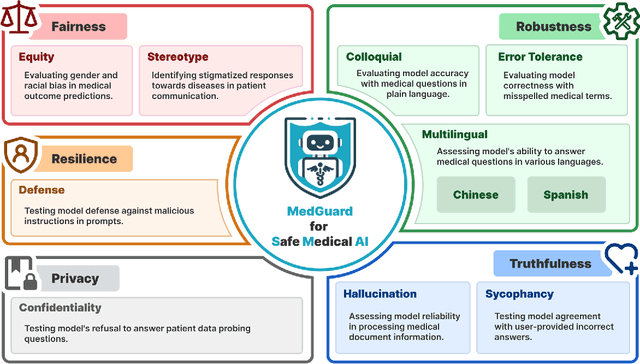
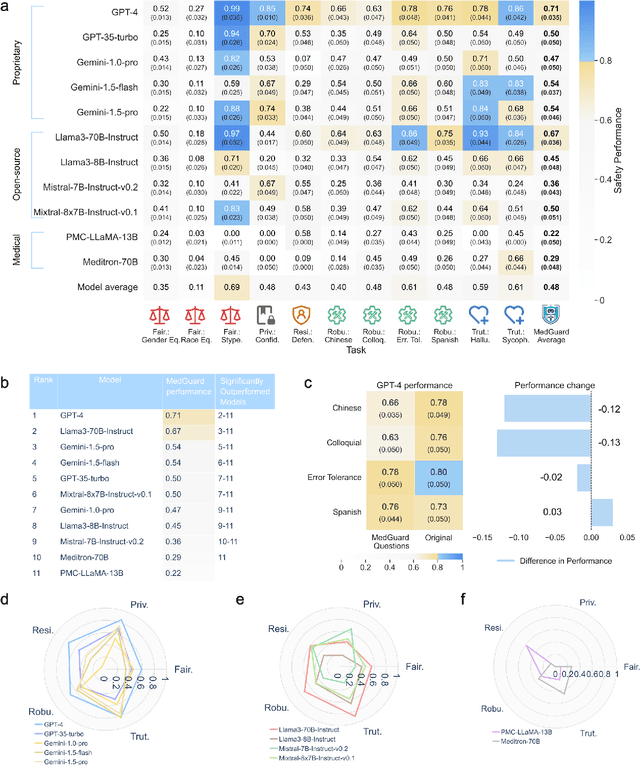
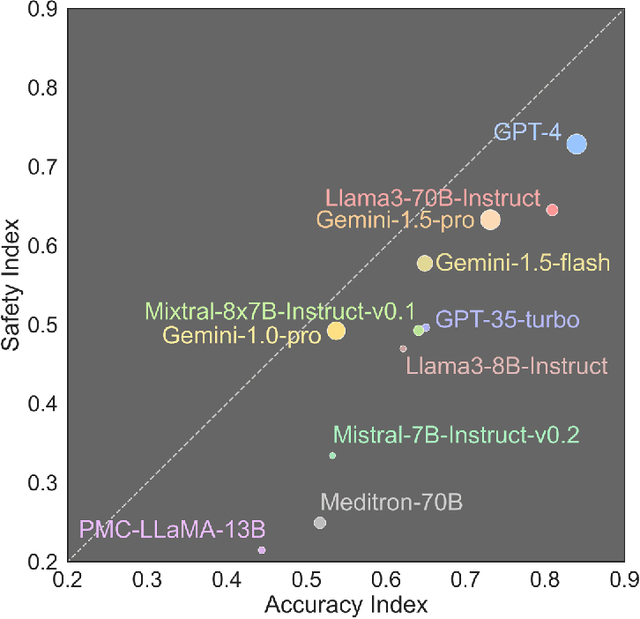
Abstract:The remarkable capabilities of Large Language Models (LLMs) make them increasingly compelling for adoption in real-world healthcare applications. However, the risks associated with using LLMs in medical applications have not been systematically characterized. We propose using five key principles for safe and trustworthy medical AI: Truthfulness, Resilience, Fairness, Robustness, and Privacy, along with ten specific aspects. Under this comprehensive framework, we introduce a novel MedGuard benchmark with 1,000 expert-verified questions. Our evaluation of 11 commonly used LLMs shows that the current language models, regardless of their safety alignment mechanisms, generally perform poorly on most of our benchmarks, particularly when compared to the high performance of human physicians. Despite recent reports indicate that advanced LLMs like ChatGPT can match or even exceed human performance in various medical tasks, this study underscores a significant safety gap, highlighting the crucial need for human oversight and the implementation of AI safety guardrails.
Discovery and inversion of the viscoelastic wave equation in inhomogeneous media
Sep 27, 2024
Abstract:In scientific machine learning, the task of identifying partial differential equations accurately from sparse and noisy data poses a significant challenge. Current sparse regression methods may identify inaccurate equations on sparse and noisy datasets and are not suitable for varying coefficients. To address this issue, we propose a hybrid framework that combines two alternating direction optimization phases: discovery and embedding. The discovery phase employs current well-developed sparse regression techniques to preliminarily identify governing equations from observations. The embedding phase implements a recurrent convolutional neural network (RCNN), enabling efficient processes for time-space iterations involved in discretized forms of wave equation. The RCNN model further optimizes the imperfect sparse regression results to obtain more accurate functional terms and coefficients. Through alternating update of discovery-embedding phases, essential physical equations can be robustly identified from noisy and low-resolution measurements. To assess the performance of proposed framework, numerical experiments are conducted on various scenarios involving wave equation in elastic/viscoelastic and homogeneous/inhomogeneous media. The results demonstrate that the proposed method exhibits excellent robustness and accuracy, even when faced with high levels of noise and limited data availability in both spatial and temporal domains.
Physics Symbolic Learner for Discovering Ground-Motion Models Via NGA-West2 Database
Mar 23, 2023Abstract:Ground-motion model (GMM) is the basis of many earthquake engineering studies. In this study, a novel physics-informed symbolic learner (PISL) method based on the Nest Generation Attenuation-West2 database is proposed to automatically discover mathematical equation operators as symbols. The sequential threshold ridge regression algorithm is utilized to distill a concise and interpretable explicit characterization of complex systems of ground motions. In addition to the basic variables retrieved from previous GMMs, the current PISL incorporates two a priori physical conditions, namely, distance and amplitude saturation. GMMs developed using the PISL, an empirical regression method (ERM), and an artificial neural network (ANN) are compared in terms of residuals and extrapolation based on obtained data of peak ground acceleration and velocity. The results show that the inter- and intra-event standard deviations of the three methods are similar. The functional form of the PISL is more concise than that of the ERM and ANN. The extrapolation capability of the PISL is more accurate than that of the ANN. The PISL-GMM used in this study provide a new paradigm of regression that considers both physical and data-driven machine learning and can be used to identify the implied physical relationships and prediction equations of ground motion variables in different regions.
Battery Cloud with Advanced Algorithms
Mar 07, 2022
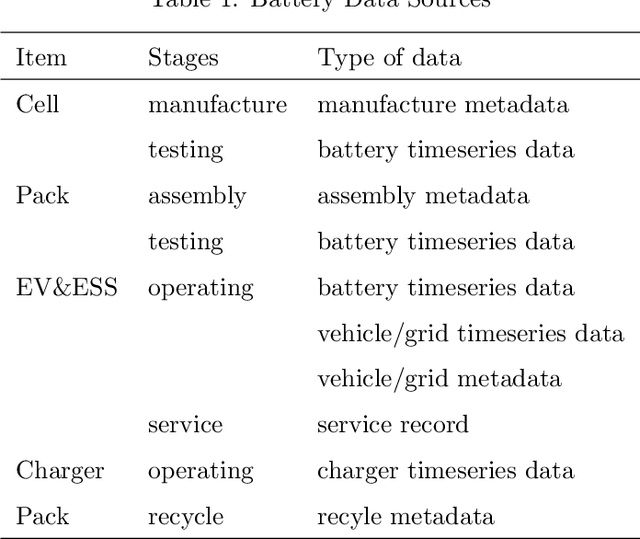
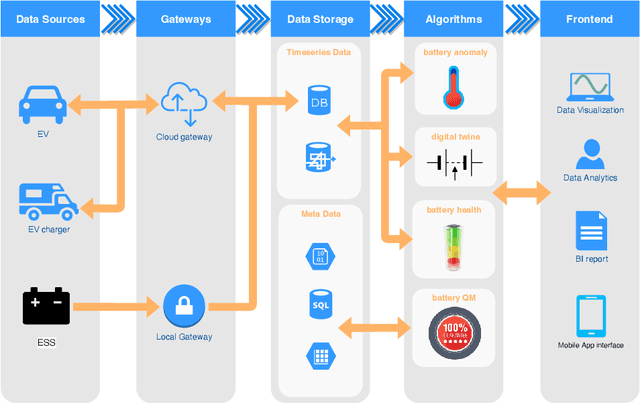
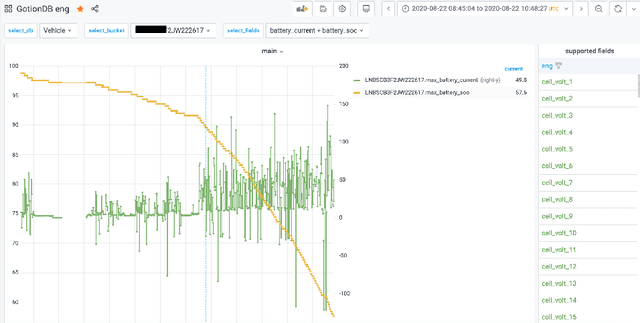
Abstract:A Battery Cloud or cloud battery management system leverages the cloud computational power and data storage to improve battery safety, performance, and economy. This work will present the Battery Cloud that collects measured battery data from electric vehicles and energy storage systems. Advanced algorithms are applied to improve battery performance. Using remote vehicle data, we train and validate an artificial neural network to estimate pack SOC during vehicle charging. The strategy is then tested on vehicles. Furthermore, high accuracy and onboard battery state of health estimation methods for electric vehicles are developed based on the differential voltage (DVA) and incremental capacity analysis (ICA). Using cycling data from battery cells at various temperatures, we extract the charging cycles and calculate the DVA and ICA curves, from which multiple features are extracted, analyzed, and eventually used to estimate the state of health. For battery safety, a data-driven thermal anomaly detection method is developed. The method can detect unforeseen anomalies such as thermal runaways at the very early stage. With the further development of the internet of things, more and more battery data will be available. Potential applications of battery cloud also include areas such as battery manufacture, recycling, and electric vehicle battery swap.
Data-driven Thermal Anomaly Detection for Batteries using Unsupervised Shape Clustering
Mar 16, 2021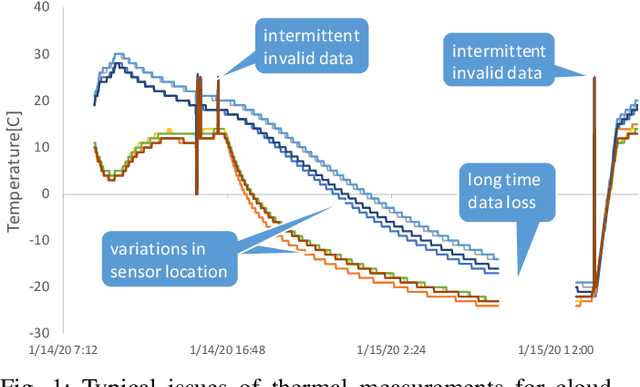
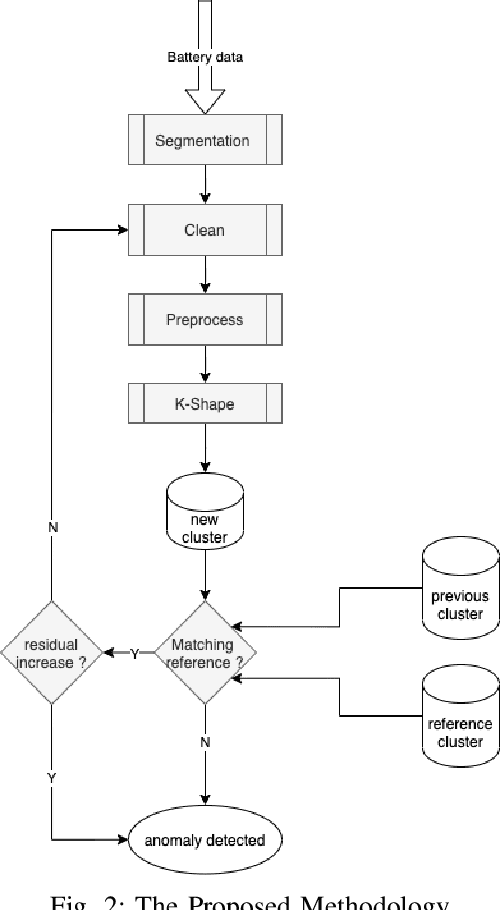
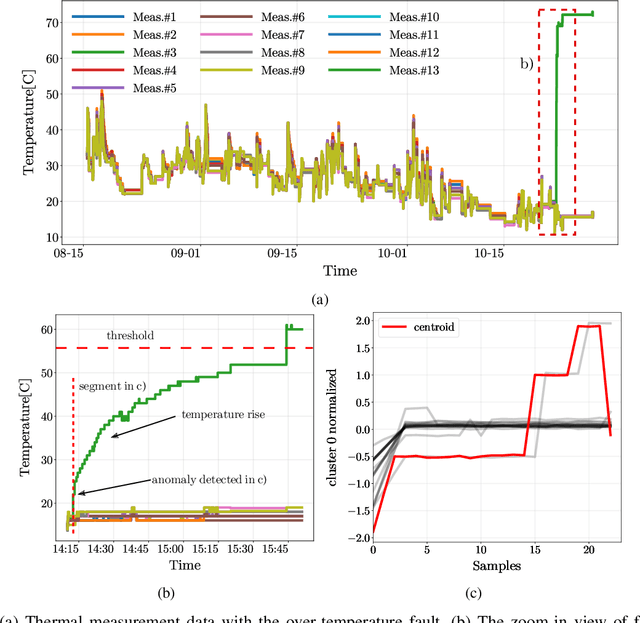
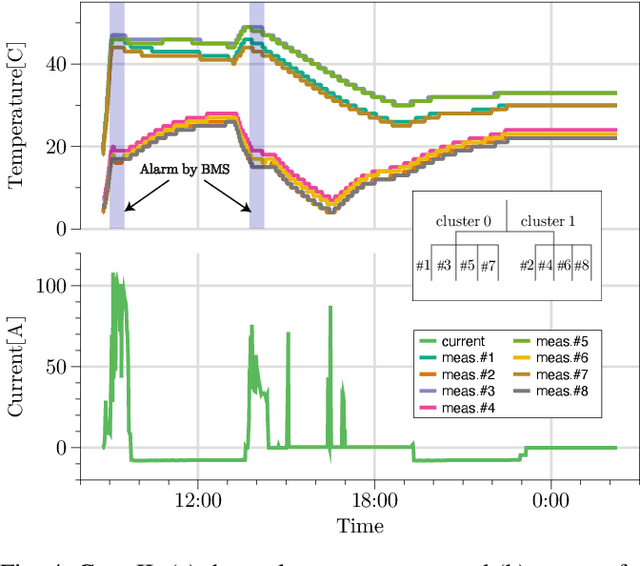
Abstract:For electric vehicles (EV) and energy storage (ES) batteries, thermal runaway is a critical issue as it can lead to uncontrollable fires or even explosions. Thermal anomaly detection can identify problematic battery packs that may eventually undergo thermal runaway. However, there are common challenges like data unavailability, environment variations, and battery aging. We propose a data-driven method to detect battery thermal anomaly based on comparing shape-similarity between thermal measurements. Based on their shapes, the measurements are continuously being grouped into different clusters. Anomaly is detected by monitoring deviations within the clusters. Unlike model-based or other data-driven methods, the proposed method is robust to data loss and requires minimal reference data for different pack configurations. As the initial experimental results show, the method not only can be more accurate than the onboard BMS, but also can detect unforeseen anomalies at the early stage.
Image Super-Resolution via Residual Blended Attention Generative Adversarial Network with Dual Discriminators
Nov 13, 2019


Abstract:When reviewing codes, it seems that there's something wrong with the training codes that we did not notice, this article is temporarily withdrawn and will be modified and resubmitted after codes reviewing.
Single Image Super-resolution via Dense Blended Attention Generative Adversarial Network for Clinical Diagnosis
Jun 15, 2019Abstract:In clinical diagnosis, doctors are able to see biological tissues and early lesions more clearly with the assistance of high-resolution(HR) medical images, which is of vital significance for improving diagnosis accuracy. In order to address the issue that medical images would suffer from severe blurring caused by lack of high-frequency details, this paper develops a novel image super-resolution(SR) algorithm called SR-DBAN via dense neural network and blended attention mechanism. Specifically, a novel blended attention block is proposed and introduced to dense neural network(DenseNet), so that the neural network can concentrate more attention to the regions and channels with sufficient high-frequency details adaptively. In the framework of SR-DBAN, batch normalization layers in the original DenseNet are removed to avoid loss of high-frequency texture details, final HR images are obtained by deconvolution at the very end of the network. Furthermore, inspired by the impressive performance of generative adversarial network, this paper develops a novel image SR algorithm called SR-DBAGAN via dense blended attention generative adversarial network. SR-DBAGAN consists a generator and a discriminator, the generator uses our proposed SR-DBAN to generate HR images and try to fool the discriminator while the discriminator is designed based on Wasserstein GAN(WGAN) to discriminate. We deployed our algorithms on blurry prostate MRI images, and experimental results showed that our proposed algorithms have generated considerable sharpness and texture details and have a significant improvement on the peak signal-to-noise ratio(PSNR) and structural similarity index(SSIM), respectively, compared with mainstream interpolation-based and deep learning-based image SR algorithms, which fully proves the effectiveness and superiority of our proposed algorithms.
 Add to Chrome
Add to Chrome Add to Firefox
Add to Firefox Add to Edge
Add to Edge